Abstract
Two branches of a family suffering from hereditary angioneurotic oedema underwent trials of therapy of ε-amino caproic-acid (EACA) to ascertain the optimum dosage required to alleviate symptoms without giving rise to unpleasant side effects.
It was found that children under 11 years tolerated 3 g/day and patients over 11 years 6 g/day without side effects, but with incomplete control of symptoms in some of the patients. However, if the dose was doubled for a period of less than 4 days during times of expected and experienced trauma, better control was achieved and unpleasant muscle cramps were not experienced. These doses, though effective, were much smaller than those used in previous studies.
Full text
PDF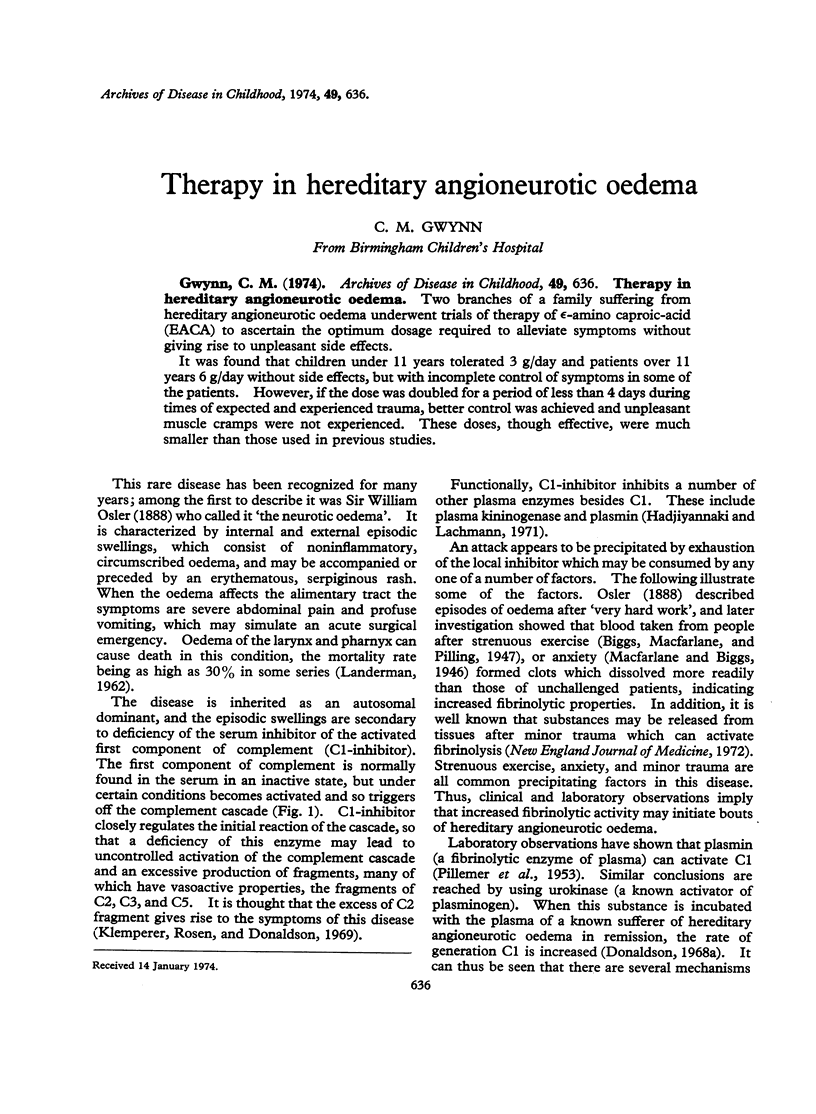
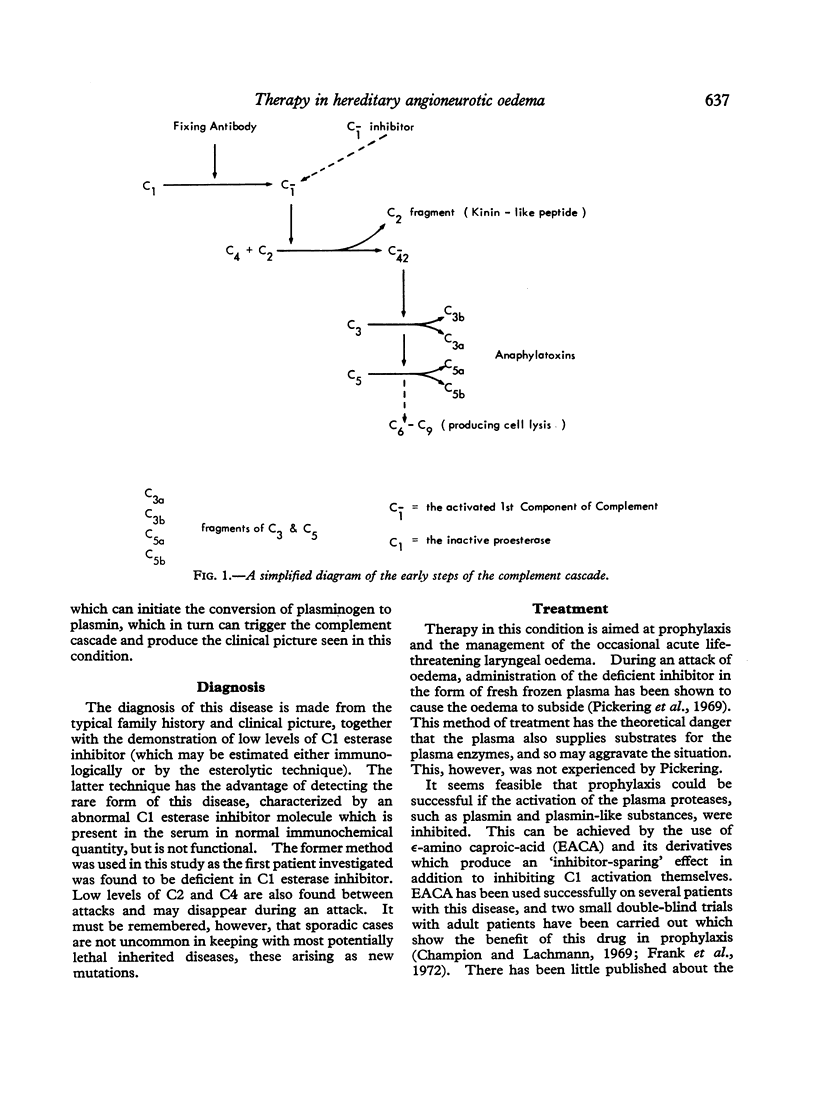
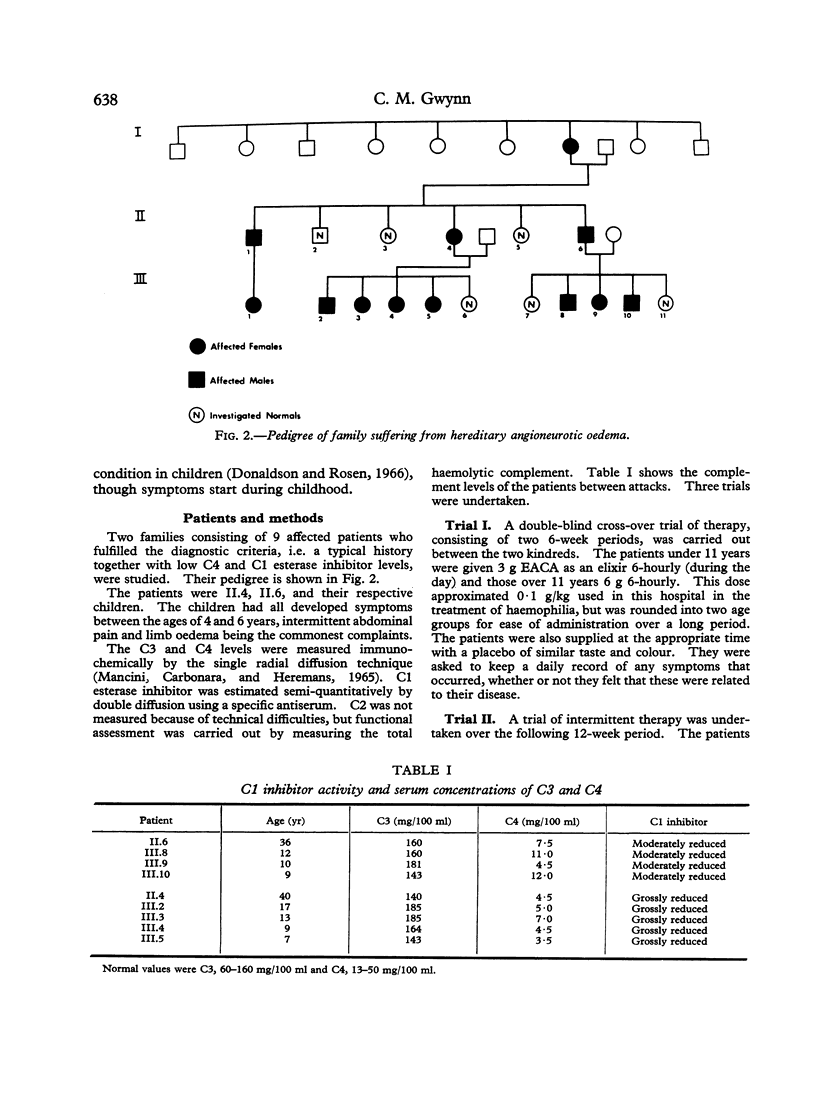
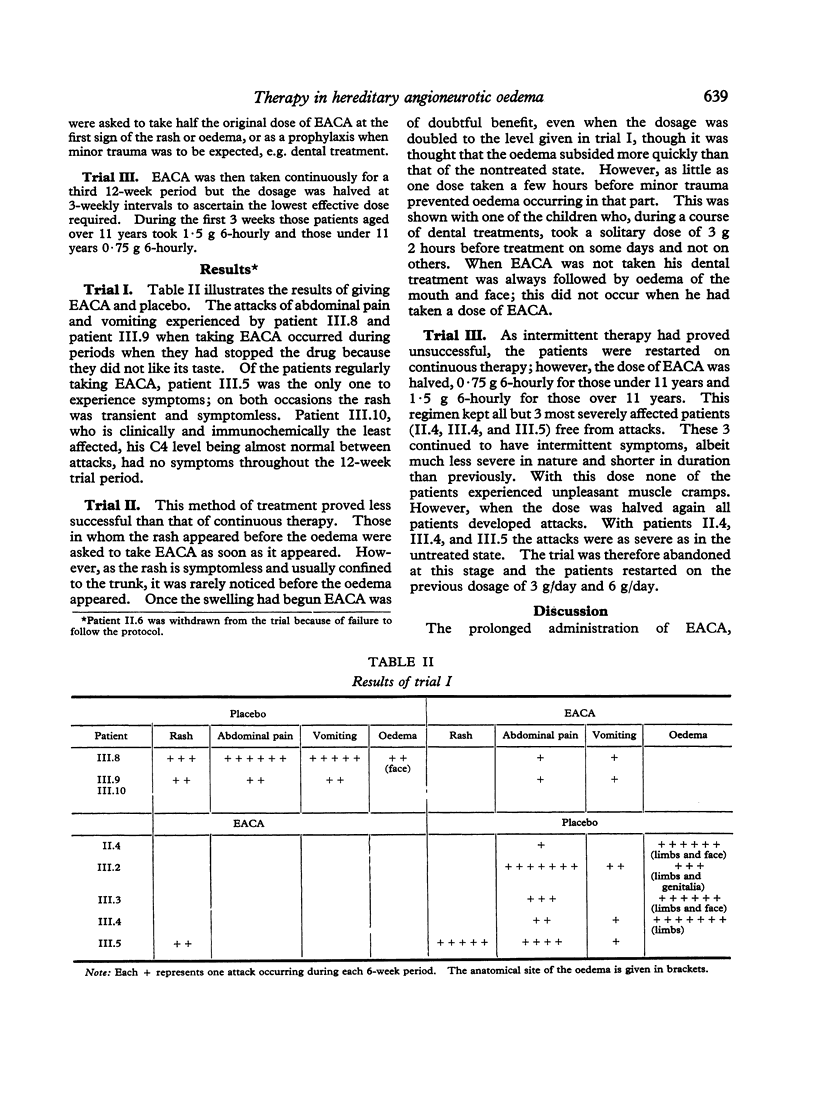
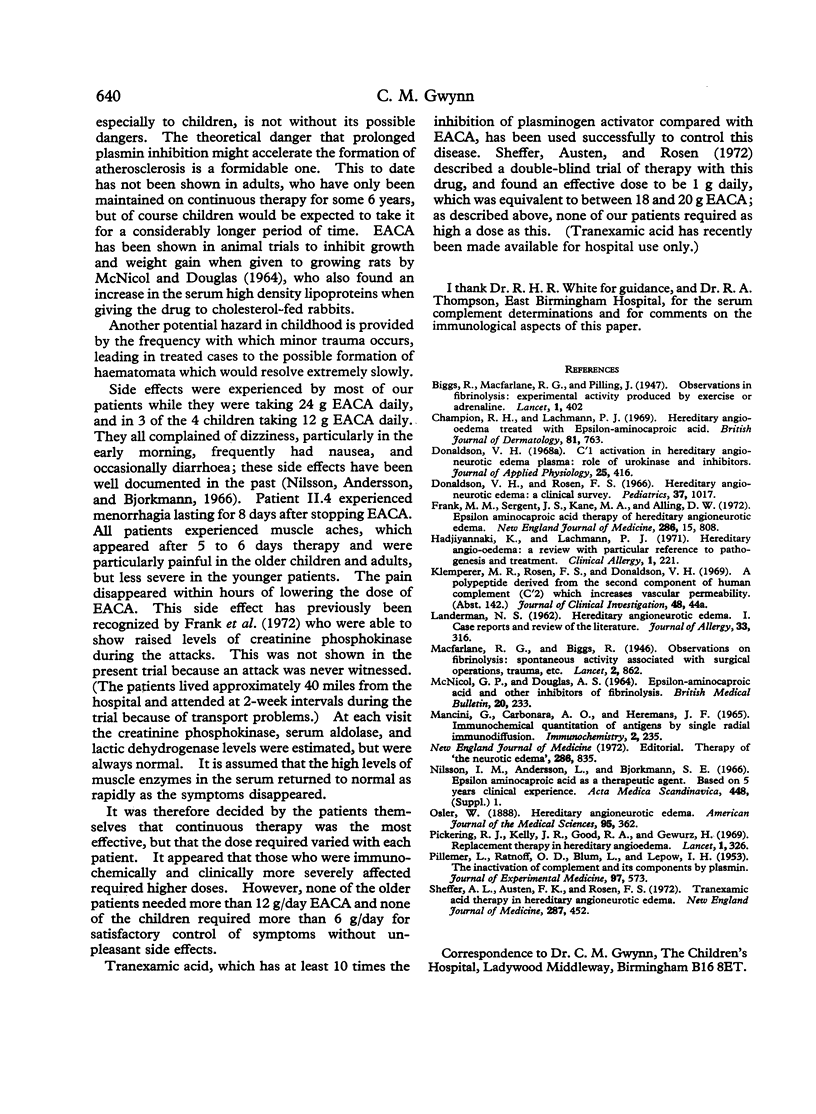
Selected References
These references are in PubMed. This may not be the complete list of references from this article.
- Champion R. H., Lachmann P. J. Hereditary angio-oedema treated with E-aminocaproic acid. Br J Dermatol. 1969 Oct;81(10):763–765. doi: 10.1111/j.1365-2133.1969.tb15938.x. [DOI] [PubMed] [Google Scholar]
- Donaldson V. H., Rosen F. S. Hereditary angioneurotic edema: a clinical survey. Pediatrics. 1966 Jun;37(6):1017–1027. [PubMed] [Google Scholar]
- Frank M. M., Sergent J. S., Kane M. A., Alling D. W. Epsilon aminocaproic acid therapy of hereditary angioneurotic edema. A double-blind study. N Engl J Med. 1972 Apr 13;286(15):808–812. doi: 10.1056/NEJM197204132861503. [DOI] [PubMed] [Google Scholar]
- Hadjiyannaki K., Lachmann P. J. Hereditary angio-oedema: a review with particular reference to pathogenesis and treatment. Clin Allergy. 1971 Jun;1(2):221–233. doi: 10.1111/j.1365-2222.1971.tb03021.x. [DOI] [PubMed] [Google Scholar]
- LANDERMAN N. S. Hereditary angioneurotic edema. I. Case reports and review of the literature. J Allergy. 1962 Jul-Aug;33:316–329. doi: 10.1016/0021-8707(62)90031-x. [DOI] [PubMed] [Google Scholar]
- MCNICOL G. P., DOUGLAS A. S. EPSILON-AMINOCAPROIC ACID AND OTHER INHIBITORS OF FIBRINOLYSIS. Br Med Bull. 1964 Sep;20:233–239. doi: 10.1093/oxfordjournals.bmb.a070338. [DOI] [PubMed] [Google Scholar]
- Mancini G., Carbonara A. O., Heremans J. F. Immunochemical quantitation of antigens by single radial immunodiffusion. Immunochemistry. 1965 Sep;2(3):235–254. doi: 10.1016/0019-2791(65)90004-2. [DOI] [PubMed] [Google Scholar]
- PILLEMER L., RATNOFF O. D., BLUM L., LEPOW I. H. The inactivation of complement and its components by plasmin. J Exp Med. 1953 Apr;97(4):573–589. doi: 10.1084/jem.97.4.573. [DOI] [PMC free article] [PubMed] [Google Scholar]
- Pickering R. J., Good R. A., Kelly J. R., Gewurz H. Replacement therapy in hereditary angioedema. Successful treatment of two patients with fresh frozen plasma. Lancet. 1969 Feb 15;1(7590):326–330. doi: 10.1016/s0140-6736(69)91295-1. [DOI] [PubMed] [Google Scholar]
- Sheffer A. L., Austen K. F., Rosen F. S. Tranexamic acid therapy in hereditary angioneurotic edema. N Engl J Med. 1972 Aug 31;287(9):452–454. doi: 10.1056/NEJM197208312870907. [DOI] [PubMed] [Google Scholar]


